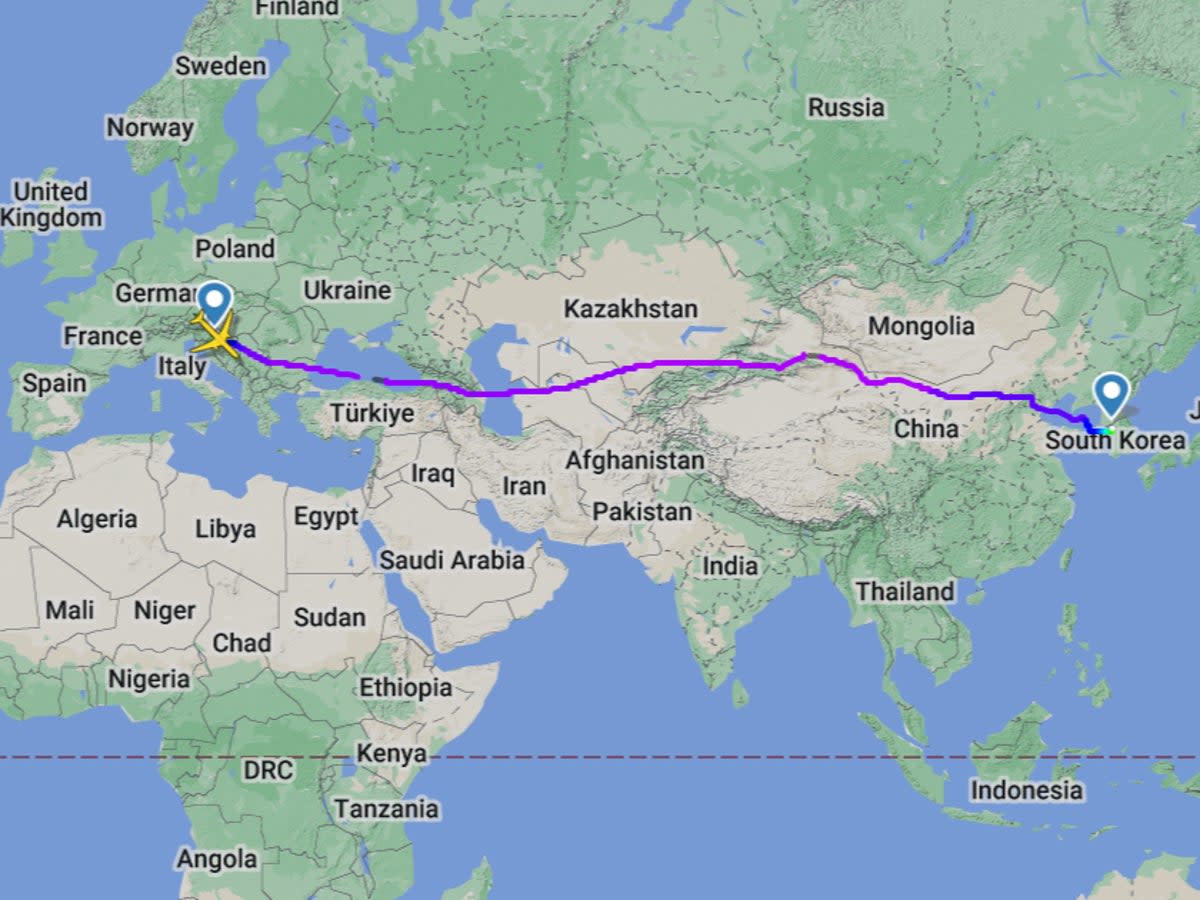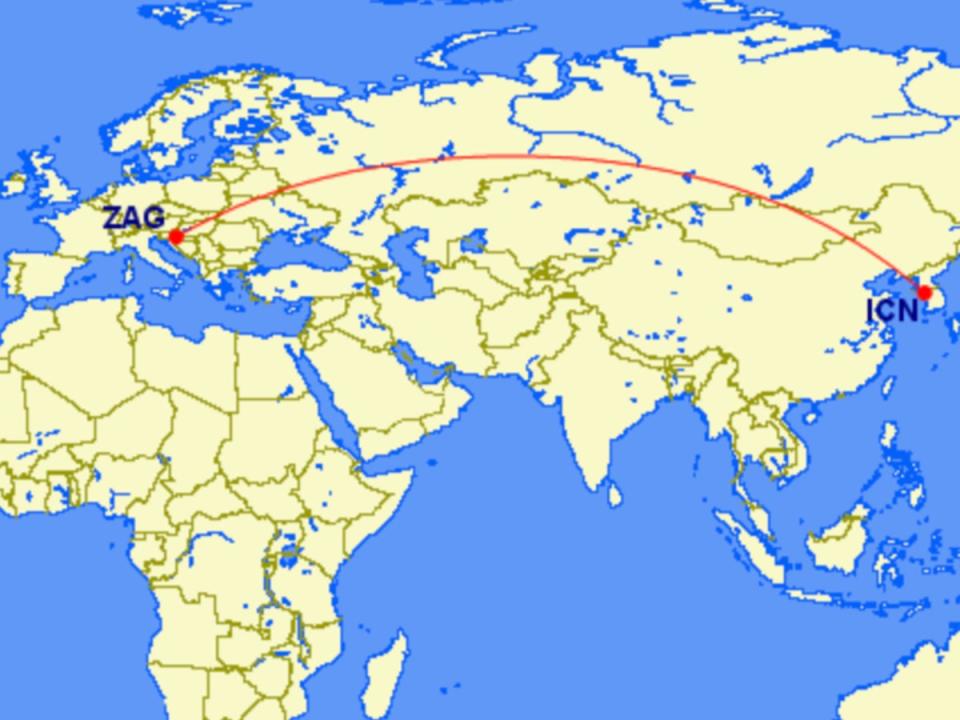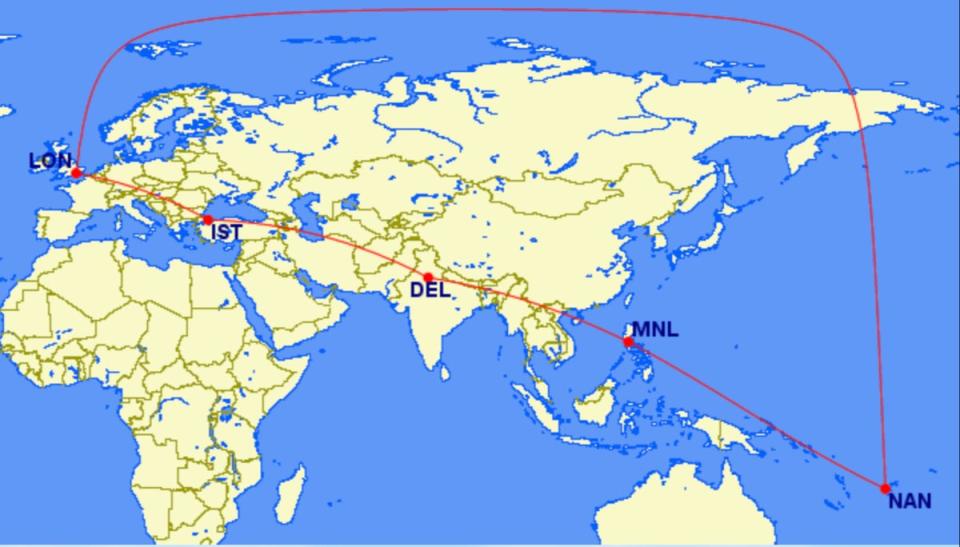Orient – but not express when geopolitics dictates the flight plan

Two-dimensional maps can be deceptive: the shortest distance between two points on the surface of the earth is rarely a straight line.
Take the journey I have just made, on a Korean budget airline, T’Way Air, between Zagreb and Seoul’s Incheon airport. The most direct flight path between the Croatian and South Korean capitals begins by aiming northeast. This “great circle” route cuts diagonally across Hungary; clips corners of both Slovakia and Poland; and continues over western Ukraine, eastern Belarus and – for two-thirds of the journey – over Russia. Were the captain to take the straightest course, the final approach would involve flying over Mongolia, China and a western corner of North Korea before descending to Incheon International Airport.
That, as they say, is not going to happen.
Let’s run through the obstacles. Ukraine has been off limits to civil aircraft since the Russian invasion. Belarus has been regarded as risky since a routine Ryanair flight from Athens to Vilnius was ordered to land in Minsk by air traffic controllers, with MiG fighters intercepting the Boeing 737 by way of friendly persuasion. A Belarusian dissident was removed from the plane before it was allowed to continue to Lithuania. Since then, Belarus air traffic control has not enjoyed a great reputation.
Continuing the putative flight plan: many Western airlines are banned from Russian skies. Others, including T’Way, choose to avoid the world’s biggest country. Yet Russia permits plenty of overflights, including those of Chinese airlines between the UK and the People’s Republic – who enjoy a time advantage over their British competitors.
Mongolia and China allow any airline through their skies, though the latter has carefully prescribed air lanes which can result in some significant zigzagging. And while North Korea’s airspace is open to the aircraft of friendly countries such as China and Russia, South Korean airlines give it a wide berth.

What happens in practice? I found out aboard the latest addition to Europe’s long-haul air schedules, T’Way Air flight TW506.
The Airbus A330 used for the flight is, ironically, an ex-Aeroflot plane. But it flies over Russia no longer, instead taking a much longer course. The initial heading was not northeast but southeast: over Serbia, Bulgaria, and the Black Sea (a long way south of Russian-occupied Crimea), then joined the long line of aircraft flying over the Caucasus.
The air navigation providers of Georgia and Azerbaijan are profiting handsomely from detouring flights. The Europe-Asia planes thread through a narrow neck between the Russian frontier to the north and the Iranian border to the south. Then we crossed a trio of ’stans – Turkmenistan, Uzbekistan and Kazakhstan – before flying east across most of the length of China to Beijing, with a final wiggle to avoid North Korea.
The flight took 10 hours and 30 minutes. Had the pilots been able to chart the optimal course, it would have been at least an hour shorter. Because the prevailing winds are from west to east, the journey in the reverse direction takes significantly longer – and the plane can’t make the trip in one go. Instead, the aircraft has to refuel in Bishkek, Kyrgyzstan on the journey from Seoul to Zagreb, extending the journey to about 14 hours.
On a two-dimensional map, the actual flight path we took looks a reasonably straight line. But it fails to take into account the curvature of the earth.
The most extreme example of this is between London and Fiji. A line drawn between them on a standard Mercator projection suggests the most direct route is east-southeast over Istanbul, Delhi, Bangkok and Manila. In fact, were an airline to contemplate such a route from the UK to the South Pacific, the straight line on the surface of the earth involves heading almost due north, over Svalbard, deep in the Arctic Ocean, and passing very close to the North Pole before beginning a due-south journey over far eastern Russia.
Which also isn’t going to happen.

When airspace is restricted, all the impacts are negative. More fuel is burnt, engines wear out sooner, crew are wearier – and those of us aboard what I believe is the world’s longest budget airline flight endure an extended journey.
Yet as the plane finally came into land at South Korea’s main airport, I enjoyed from the window seat a fine view of North Korea’s mountains retreating into the haze in the direction of Pyongyang. One day…

